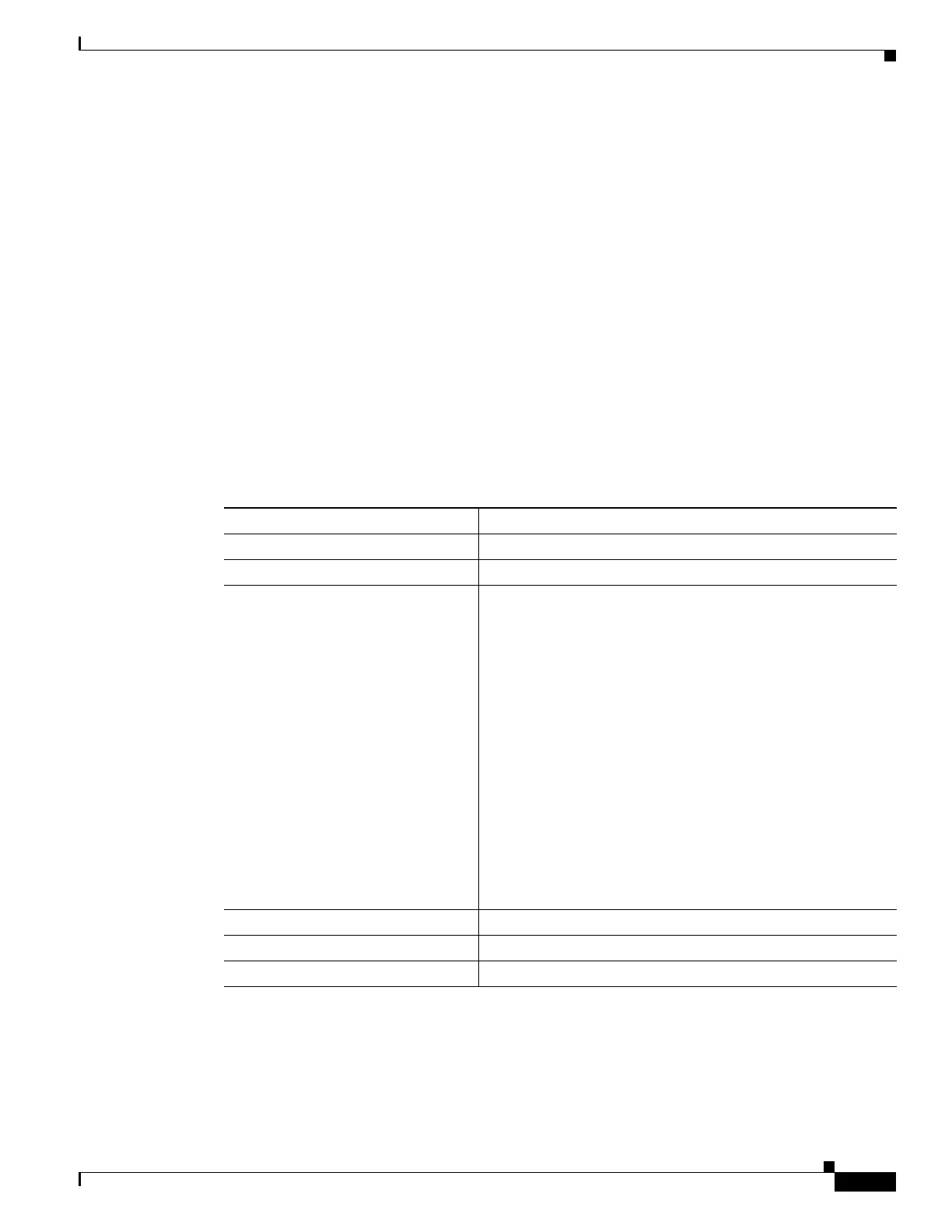277
Cisco 3900 Series, Cisco 2900 Series, and Cisco 1900 Series Integrated Services Routers Generation 2 Software Configuration Guide
Chapter Configuring Radio Settings
Configuring Radio Channel Settings
Configuring a Channel
Use the channel command to configure a channel. The command for the interface is modified to only
allow you to select a specific channel number and to enable DFS.
To configure a channel, follow these steps.
SUMMARY STEPS
1. configure terminal
2. interface dot11radio1 dfs simulate
3. channel {number | dfs band <1–4>}
4. end
5. show running-config
6. copy running-config startup-config
DETAILED STEPS
The following example selects channel 36 and configures it to use DFS on a frequency band 1:
ap# configure terminal
ap(config)interface dot11radio1
ap(config-if) channel 36
ap(config-if)
Command Purpose
Step 1
configure terminal Enters global configuration mode.
Step 2
interface dot11radio1 dfs simulate Enters the configuration interface for the 802.11a radio
Step 3
channel {number | dfs band <1–4>} Specifies the channel to use.
For number, enter one of the following channels: 36, 40, 44, 48,
149, 153, 157, 161, 5180, 5200, 5220, 5240, 5745, 5765, 5785,
or 5805.
Enter dfs and one of the following frequency bands to use
dynamic frequency selection on the selected channel:
1—5.150 to 5.250 GHz
2—5.250 to 5.350 Ghz
3—5.470 to 5.725 GHz
4—5.725 to 5.825 GHz
If you attempt to configure a channel that may only be selected
by dfs, the following message appears:
This channel number/frequency can only be used by
Dynamic Frequency Selection (DFS)
Step 4
end Returns to the privileged EXEC mode.
Step 5
show running-config Verifies your entries
Step 6
copy running-config startup-config (Optional) Saves your entries to the configuration file.

